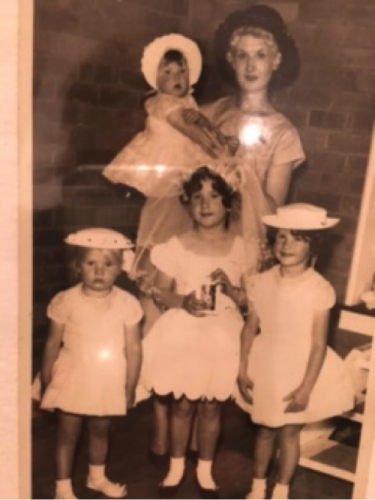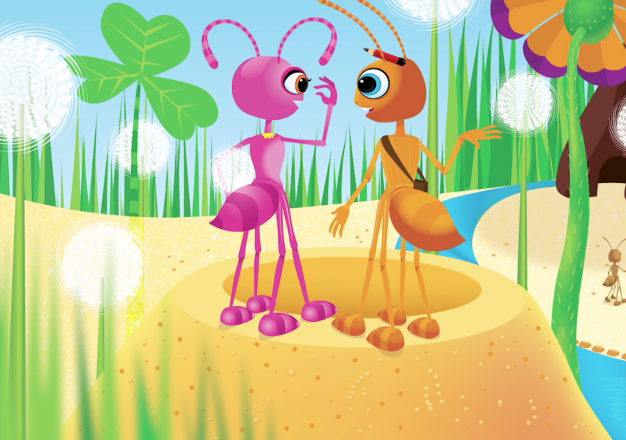Parental Guidance in Supporting the Little Worrier!

| Posted: | June 27, 2016 |
| Author: | Deberea Sherlock Educational and Developmental Psychologist |
Share this article:
The first of three instalments that discuss childhood anxiety and management strategies
Nothing is more powerful in the psychology of children than the need for love, nurturance, and encouraging guidance. When we consider that one in eight children meet criteria for a formal diagnosis of anxiety, with many more children experiencing unsettling worry, there are opportunities for parental guidance in helping children learn and use skills to cope effectively with worry.
As a child psychologist I bring with me the insights of my own experience of childhood worry and my mother’s wise guidance. Instinctively, my mother modeled resilient ways of coping for her six children. She embodied a commonsense wisdom fused with mother-tiger protective guidance. Her message was clear yet far from simple. She explained to her children that it is normal to feel worry, that life is full of uncertainties and that we must learn to deal with this reality. She fully connected with our emotional experiences in her typical supportive and protective style but at the same time she placed an emphasis and an expectation on coping. As I write this instalment I smile in admiration for my mother who at the age of 83 years continues to shepherd her family’s emotional experiences. As children, she guided calming, fostered helpful thinking, used gentle encouragement to face fears head-on, and placed the focus of her attention on her children’s effor
First Up – The Facts!
Everybody experiences worry from time to time. It is a natural human reaction, especially when there is an expectation of threat – real or imagined. Worry can be helpful in alerting us to possible danger and protecting us from harm; and it can be developmentally appropriate, like fear of strangers in infancy, fear of the dark in early childhood, and worries about friendships in later childhood.
Worry becomes a problem when it occurs often, for a long time, or when a child can’t stop worrying. Worry is particularly troublesome when it stops a child from participating in everyday activities and events. When worry becomes a problem, it is often referred to as anxiety. When the symptoms are intense, distressing and interfere with normal living then the anxiety is classified as a disorder.
Many anxious children are very capable but the burden of anxiety may impact upon their family, school and social lives. This places them at risk of academic underachievement, missed social experiences and social difficulties. The good news is that there is help for anxious children and it comes as no surprise that parents play a key role in building their child’s resilience!
Different Presentations of Childhood Anxiety
There are typical patterns of behaviour that are classified as different presentations of anxiety and, as you will read, the essential features of each disorder are defined by its name and the subtle qualities of thinking patterns underlying the anxiety.
Generalised Anxiety involves excessive worry about a range of things. Most children worry every now and again. This is to be expected, as it is part of the natural course of development. However, some children worry excessively about many things and this interferes with their daily functioning. They worry about the day’s events and what might happen tomorrow, and typically ask lots of ‘what if?’ questions. What if we don’t get a car park at the shopping centre? What if dad runs out of petrol on his way home from work? What if someone breaks into our house at night? What if my friend won’t be at school tomorrow? What if you’re not there to pick me up? What is striking about generalised anxiety is that the level of risk associated with a particular worry is unrealistically inflated.
Separation Anxiety involves marked distress when separating from a parent or caregiver. Although part of the natural course of development for young children, some children worry unrealistically that their parents will be harmed in some way or that something terrible will happen that will separate them from their caregivers. This typically presents as clingy behaviour, ‘school refusal’ or unwillingness for the child to sleep in his/her own bed.
Panic Disorder involves the distressing physical symptoms of heightened anxiety (pounding heart, sweating, shaking, confused thinking). The panic episodes are short-lived but extreme and typically involve a sudden rush of fear or dread, a fear of ‘going crazy’ or fear of dying.
Phobias involve intense fear or avoidance of specific situations (e.g. performance in front of others; thunderstorms; the dark), animals (e.g. spiders; snakes) or objects (e.g. park slides; toy clowns) beyond what is considered to be age appropriate.
Obsessive-Compulsive Anxiety involves excessive worry about contamination or harm and this worry is accompanied by compulsive behaviours that are performed by the child to reduce the anxiety (e.g. fear of contamination from door handles leads to repetitive hand washing). The anxiety of obsessive-compulsive disorder may be associated with recurrent and distressing thoughts that lead to repetitive and irrational behaviours such as organising belongings in a very specific pattern or routine, or cleaning rituals. The child typically becomes distressed if prevented from carrying out the ritual or compulsion, yet the ritual prolongs the condition and interferes with the child’s daily functioning.
The Anxiety Triad – Body Reactions, Thoughts and Behaviour
Although there are different presentations of worry, the experiences of worry share broad similarities that can be described in terms of three components: body reactions, thoughts and behaviour. These components interact with each other to either heighten or lessen the experience of anxiety. Understanding these components and their interactions can help parents detect the ‘tell-tale’ signs of a brewing anxiety, enabling them to intervene early in guiding their child’s use of skills to calm. Let’s have a closer look at each component.
Body Reactions: Many of us are well acquainted with the physical body reactions of anxiety. These may involve pounding heart, shaking, dry mouth, lump in the throat, ‘butterflies’ in the stomach, tension, headaches, ‘twitchy bladder’ or sweaty palms. The child may voice a number of physical concerns in the lead up to a particular situation or in their attempts to avoid the situation (e.g. “Mum, I feel sick in my stomach and I have a headache. I’m too sick to go to school today”). Young children may not understand the changes occurring in their body when they worry. They may have difficulty identifying and labelling emotion. Parents can help their child make sense of their feelings in describing ‘what they see’, ‘what they hear’ and ‘what they understand’. For example, ‘John I see you biting your nails, I hear you complaining of a tummy pain, I understand you are feeling worried’.
In the instalment to follow, you will be introduced to a number of simple exercises that you can share with your child. These exercises represent the first step in managing worry. Children are taught to calm their body through various breathing techniques in order to prepare their mind for helpful thinking.
Thoughts: The thinking component refers to worrying thoughts that typically focus on some type of danger or threat. There are two common unhelpful thinking patterns associated with anxiety: overestimating the chances of bad things happening; and thinking what might happen will be catastrophic and unbearable (‘the worst thing in the world’). Parents can model resilient attitudes and ways of thinking that set the stage for a resilient coping style within the family household. I will have more to say on how to do this in a later instalment.
Behaviour: The way a child behaves when worried typically involves some type of avoidance, such as staying away or escaping a situation they fear. Avoidance becomes a problem when it causes distress and interferes with a child’s participation in everyday events (e.g. going to school, asking a question in class, or joining friends in play). Subtle forms of avoidance may involve withholding full efforts. This is a type of mental avoidance. Although physically present, mental avoidance has the effect of reducing anxiety in the short term but it comes at the cost to a valuable life lesson – I can cope, I can do this, I can give of my personal best, I can achieve!
I invite you to stay tuned to the following two instalments where I step out practical tips for parents to help their children build an important set of skills for life!
About the MASTER Institute
MASTER provides services, resources and guidance for parents, teachers and allied health professionals in supporting the social and emotional wellbeing of young children. Dr Deberea Sherlock and Aisling Mulvihill founded the MASTER Institute in 2012. From the combined professions of educational and developmental psychology and speech-language pathology, they bring to MASTER over 20 years of collective specialised experience in the area of children’s social and emotional development, and a deep understanding of children and the challenges they face. Their work is strongly guided by a desire to engage children through creative learning and the wider value of working collaboratively with families and schools.





